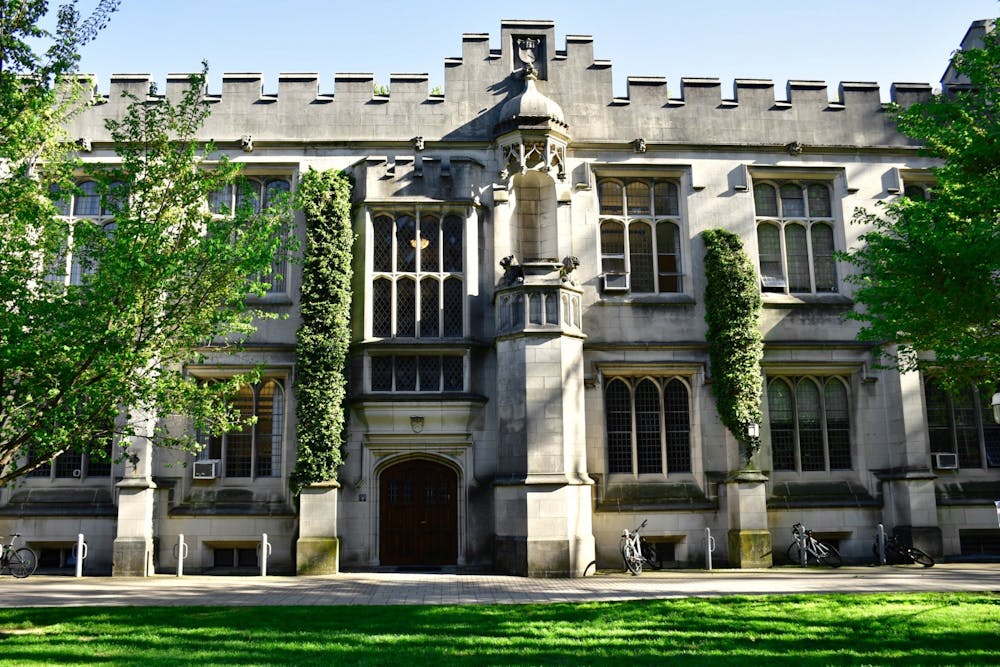The following is a guest contribution and reflects the author’s views alone. For information on how to submit to the Opinion Section, click here.
One of the most notable dynamics in the modern workforce has been credential inflation: professions requiring more and more education to enter. As Burton Bollag writes in the Chronicle of Higher Education: “When Brenda M. Coppard was studying occupational therapy in the late 1980s, a bachelor’s degree was the standard ticket to enter the profession. By the 1990s, a master’s degree was expected. Today a doctorate is becoming the norm.” We’re seeing a very similar type of credentials inflation here at Princeton, as academic requirements increase to be awarded a degree. This dynamic threatens the integrity of a liberal arts education.
The Princeton admissions website describes a liberal arts education as offering an “expansive intellectual grounding in all kinds of humanistic inquiry … by exploring issues, ideas and methods across the humanities and the arts, and the natural and social sciences.” University President Christopher L. Eisgruber ’83 himself has said: “I came to Princeton because I wanted a liberal arts education that would enable me to pursue multiple interests rigorously.” The promise of a liberal arts education is exploring many disciplines, and having numerous course requirements hinders that exploration.
The best way to allow students to explore diverse academic interests is to allow students in the A.B. program to take any classes that fulfill their required 31 courses with minimal requirements. Students will learn more when they’re taking diverse classes to explore their passions, not to fill arbitrary requirements.
Yet unfortunately, the trend seems to be going in the opposite direction. In 2020, the Culture and Difference (CD) distribution requirement was added, bringing the number of requirements up to eight. Exposure to the perspective of marginalized groups is important, but the University could have created the new CD requirement while eliminating one other A.B. distribution requirement to avoid increasing the overall number of requirements for graduation.
More concerningly, individual departments seem to be increasing requirements. The Rule of 12 prevents A.B. students from taking more than 12 courses in any one department, not including two departmental prerequisites. To complete a concentration, students generally must complete a minimum of eight departmental courses. Thus, the total number of departmental courses can be between eight and fourteen. Over time, I have seen each department’s number of required courses creeping closer to the maximum. We can see the changes by comparing the requirements in 2002 and 2022.
First, let’s look at the School of Public and International Affairs (SPIA). In 2002, no prerequisite courses were required. The following were the departmental requirements: “Concentrators must take at least three courses in the ... School. They must take at least three courses, 300-level or above, in one of the following departments: economics, history, politics, and psychology, or sociology, plus at least three other social science courses. In addition, the … School has an ethics and quantitative analysis requirement.” In total, that is 11 required courses.
Today, SPIA has much more onerous requirements. There are four required prerequisites, seven core course requirements, and six additional elective courses with strict guidelines for how they must be distributed, for a total of 17 courses (SPIA dodges the Rule of 12 by requiring courses in multiple departments). In addition, SPIA now requires a cross-cultural or field experience requirement, which is typically fulfilled over the summer.

Similarly, although the Department of Sociology only required eight courses in 2002, it now requires nine courses in 2022. One additional required course about claims and evidence in sociology, SOC 300, was added. The Department of English required nine courses in 2002, but requires ten courses in 2022. The Department of Religion has also increased its requirements from eight to nine departmentals. In Psychology, the eight departmentals have remained the same, but the number of prerequisites, which do not count towards departmentals, has increased from two to three. Similarly, Anthropology has increased the number of required departmentals from eight to nine. In the Department of Computer Science, the number of departmentals has stayed the same at eight, but there are many more restrictions for how they must be distributed and the number of required prerequisites has increased.
On its own, increasing requirements by one course may not seem like much, but at a school where students can take a limited number of courses, a single more prescribed course can have a large impact — and the pattern shows that students have less and less freedom as to which courses they can choose.
The reason for this credential inflation isn’t hard to understand: as students and administrators come up with new ideas to enrich the curriculum, they usually add them to all the existing requirements instead of replacing existing requirements. But this is a mistake. Increased requirements cause students more stress and curtail their freedom to pursue their intellectual curiosity. We deserve the right to pursue the multiple interests that brought Eisgruber to Princeton in the first place.
Saad Mirza is a junior majoring in history from Olean, N.Y. He can be reached at smirza@princeton.edu.









